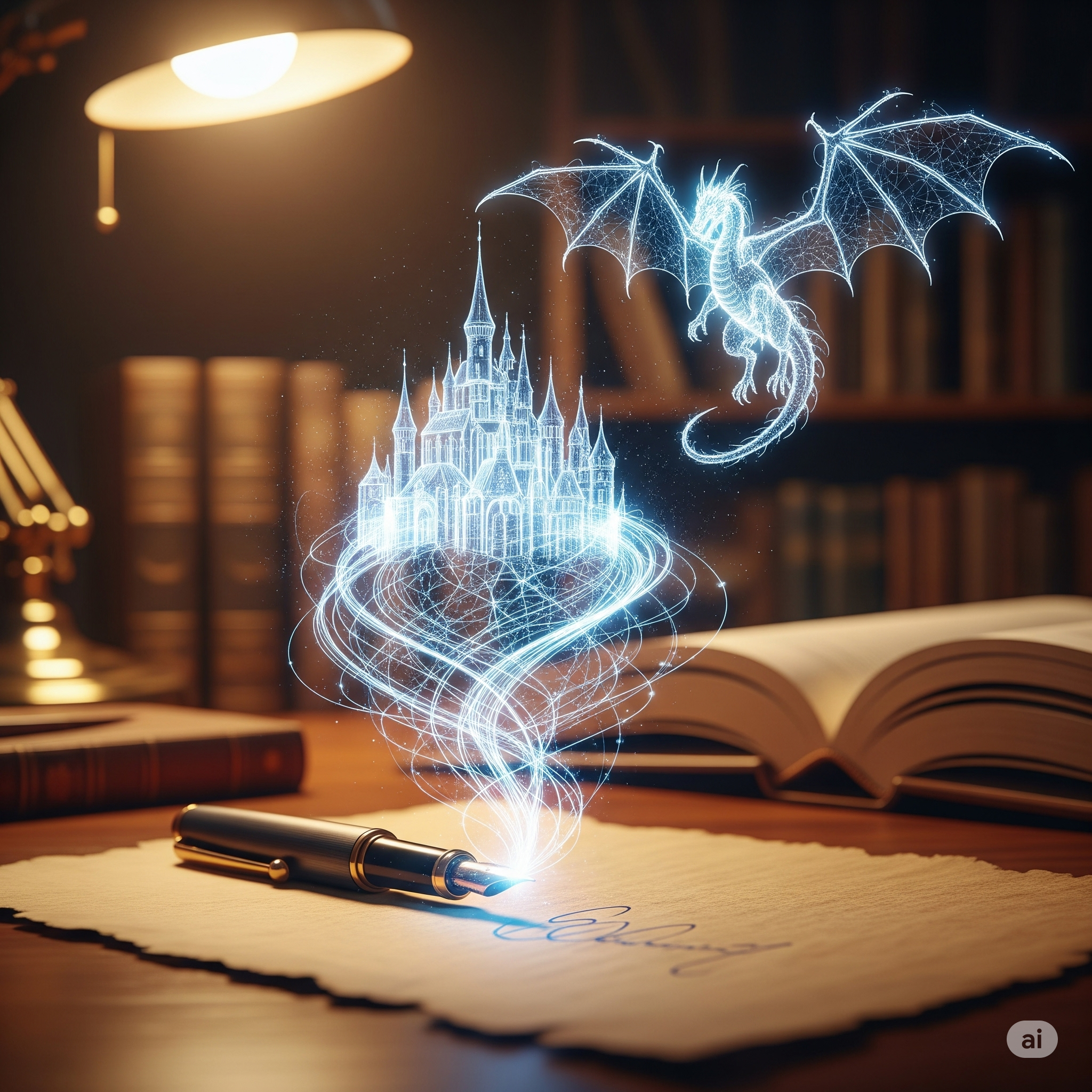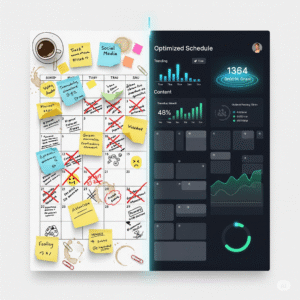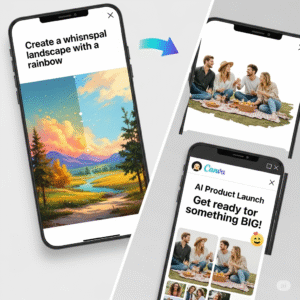The cursor blinks. A mocking, rhythmic pulse on an ocean of white. Every writer knows this feeling. It’s the icy dread of the blank page, the tangled knot of a plot that’s gone cold, the frustrating search for a word that dances just out of reach. For centuries, this solitary struggle has been part of the writer’s mythos. But what if it didn’t have to be? What if you could have a tireless brainstorming partner, a brilliant researcher, and an ever-patient muse on call, 24/7?
This is the new reality offered by the burgeoning field of AI creative writing. For many authors, the rise of artificial intelligence has been met with a healthy dose of skepticism and fear. Does it signal the end of human creativity? Will it replace the author’s unique voice? The answer, you may be surprised to learn, is a resounding no. Instead of a replacement, savvy authors are discovering that AI is the ultimate collaborator.
This guide will demystify the world of author AI tools. We will explore how to ethically and effectively use AI creative writing not to write for you, but to write with you—to break through barriers, deepen your worlds, and amplify your own unique creative spark. It’s time to stop seeing AI as a threat and start seeing it as the most powerful tool to enter an author’s toolkit since the word processor.
The Fear and the Reality: What AI Creative Writing Isn’t (and Is)
Before we dive into the practical applications, it’s crucial to dismantle the biggest misconception about using AI creative writing. The fear is that authors will simply type a prompt like “write a bestselling fantasy novel” and a soulless, generic book will appear. This is a fundamental misunderstanding of how these tools work and, more importantly, a misunderstanding of the creative process itself.
It’s Not a “Push-Button Novel” Generator
An AI model has no life experience. It has never felt heartbreak, smelled a forest after the rain, or understood the complex, unspoken bond between two characters. It can assemble words in a grammatically correct and often beautiful way, but it lacks the core ingredient of all great storytelling: a human heart. Relying on an AI to write your entire book will result in a technically proficient but emotionally hollow shell. It lacks a point of view, a unique voice, and true intention—the very things that make your writing yours.
It IS an Intelligent Writing Partner
The true power of AI creative writing lies in its ability to act as a force multiplier for your own imagination. Think of it as a tireless assistant. It’s the brainstorming partner who never runs out of ideas. Also, It’s the world-building apprentice who can generate a thousand years of fictional history on command. It’s the linguistic muse who can offer you ten different ways to describe a sunset when you’re stuck on one. The AI provides the raw clay; you are the sculptor who shapes it into art. This collaboration is where the magic truly happens.
Practical Magic: How to Use AI Creative Writing to Enhance Your Craft
So, how do we move from theory to the keyboard? The most effective author AI tools are those that integrate seamlessly into your existing writing process, offering support at every stage from initial spark to final polish.
Here are some of the most powerful ways to leverage AI creative writing:
- Brainstorming and Idea Generation: Stuck for a plot? Feed an AI a simple premise like “a detective in a city powered by magic” and ask it for ten potential plot hooks, five surprising villains, or three compelling central conflicts.
- Overcoming Writer’s Block: The blinking cursor is your enemy. Defeat it by asking your AI partner a leading question. “My character just discovered a secret. What are three possible secrets she could find, and how would each one complicate her life?” This simple prompt can shatter the block and open up new narrative pathways.
- Character Development and World-Building: This is where AI creative writing truly shines. Use it to flesh out character backstories, generate descriptions of forgotten ancient cities, create unique magic systems with consistent rules, or even draft dialogue in a specific character’s voice to see how it sounds.
- Improving Prose and Editing: AI can be a powerful stylistic editor. Paste a paragraph and ask it to rewrite it in a more active voice, suggest stronger verbs, or describe the same scene from a different character’s sensory perspective. This isn’t about replacing your voice, but about seeing your own work through a new lens.
Case Studies: Authors Winning with AI Creative Writing Tools
Let’s look at how real writers are using these tools to produce better work, faster.
Case Study 1: Maria, the Fantasy Novelist
The Challenge: Maria was deep into the second book of her epic fantasy series but was getting lost in her own lore. Keeping track of character bloodlines, the history of her world’s forgotten wars, and the rules of her complex magic system was becoming a nightmare of spreadsheets and messy notes.
The AI Solution: Maria started using OpenAI’s ChatGPT as a dedicated “lorekeeper.” She would feed it her established facts and then use it to brainstorm and expand. She prompted it to “generate a timeline of the Sunstone Dynasty based on these three key events” or “create a list of common potions and their ingredients in the world of Eldoria.”
The Result: Maria built a comprehensive and consistent world bible in a fraction of the time. The AI helped her spot inconsistencies in her own timeline and even generated new, exciting ideas for subplots based on the history it helped create. Her process became more organized, freeing her creative energy to focus on storytelling, not just data management. This is a prime example of leveraging AI creative writing for complex projects.
Case Study 2: David, the Thriller Writer
The Challenge: David’s thriller had a great start and a killer ending, but the middle sagged. He felt his protagonist was simply moving from one plot point to the next without enough tension or character-driven conflict.
The AI Solution: David turned to a specialized author AI tool called Sudowrite. When he got stuck, he would use its “Brainstorm” feature to generate a list of potential complications or twists. He used its “Describe” function to add richer sensory details to his scenes, making them more immersive and tense.
The Result: The AI acted as a defibrillator for his plot. It suggested a shocking betrayal by a seemingly loyal side character that completely re-energized the story. It helped him craft more visceral descriptions of his action scenes, raising the stakes for the reader. David maintained complete creative control, using the AI’s suggestions as a springboard for his own ideas, ultimately fixing his “soggy middle” problem.
AI Hiring Small Business Recruitment
A Beginner’s Workflow for AI Creative Writing
Ready to dive in? Approaching AI creative writing with a clear strategy is key to getting the best results without feeling overwhelmed.
- Start with a Goal, Not a Blank Slate: Don’t ask the AI “what should I write?” Instead, come with a spark. “I have an idea about a haunted lighthouse. Help me brainstorm.” The more specific your starting point, the better the AI’s suggestions will be.
- Master the Art of the Prompt: Prompting is a skill. Be specific, provide context, and define the persona. Instead of “describe a castle,” try “Describe a crumbling, gothic castle perched on a cliff during a thunderstorm, from the perspective of a terrified child.”
- Use AI for Options, Not Final Drafts: The AI’s job is to give you a menu of possibilities. Generate five different opening lines, three potential character flaws, or four different ways a conversation could end. You are the chef who chooses the ingredients.
- Weave, Don’t Copy-Paste: Resist the temptation to copy and paste large chunks of AI-generated text. The best results come from reading the AI’s output, getting inspired, and then writing the scene yourself, in your own voice, weaving in the best of the AI’s ideas.
- Your Voice is the Final Editor: Always remember that you are the author. The AI is a tool. Every word that makes it into your final manuscript should be a word you have chosen, polished, and infused with your own unique style and intent. According to the Alliance of Independent Authors (ALLi), ethical AI usage hinges on significant human authorship and transparency.
The Modern Author’s Toolkit: Top Author AI Tools
The landscape of author AI tools is expanding rapidly. Here are a few of the most popular and effective platforms for creative writers:
- ChatGPT: The ultimate multi-tool. Its power lies in its conversational flexibility. It’s perfect for brainstorming, research, outlining, character interviews, and experimenting with prose.
- Sudowrite: Designed by authors, for authors. It’s purpose-built for fiction writing, with specific features like “Describe” (adds sensory details), “Twist” (suggests plot twists), and “Write” (expands your prose in your style).
- ProWritingAid: A super-powered grammar and style editor. It uses AI to go far beyond simple spell-checking, analyzing pacing, sentence structure, clichés, and repetition to help you tighten your prose.
Conclusion: Your New Creative Partnership
The arrival of AI creative writing is not the twilight of the author but the dawn of a new kind of creative partnership. These tools are not here to steal our stories; they are here to help us find them. They offer a powerful antidote to the isolation of the blank page, providing endless inspiration without ever overshadowing the essential human element that lies at the core of all great art.
By embracing AI creative writing as a collaborator, you can streamline your process, deepen your creative work, and spend less time fighting with the page and more time doing what you love: telling stories. So open a new document, invite your new AI partner to the table, and see what incredible worlds you can build together.



